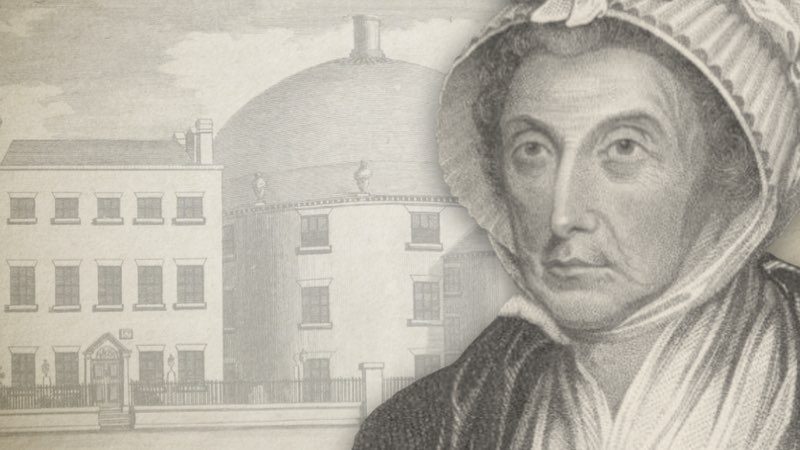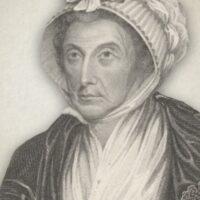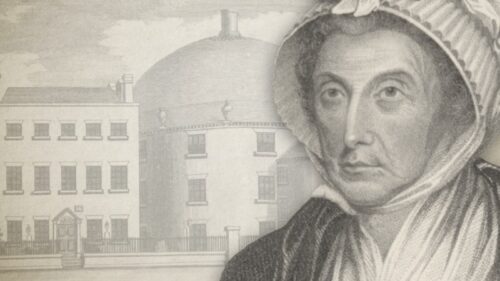
The Life And Ministry Of Selina Hastings
The Sower 1892:
It is due to the memory of great saints that their names should not only be kept alive, but that the fragrance that gathered around them in life should he preserved. Popery has always canonized its great names; Protestantism has its uncanonized saints. Among them are those zealous servants of God who took such a distinguished part in the great Revival of the eighteenth century, such as Whitefield and Wesley, and their active coadjutors. Foremost among the great helpers was the devoted Countess of Huntingdon. It is more than a hundred years since she left the world, and to some of the present day she is but a name, to many scarcely that. But the life and labours of this noble Christian lady are worthy of being reproduced for this generation. The part she took in the great religious movement of her times left behind it an influence that has not yet died out of the Churches, nor ceased to affect the world.
Verily, she “being dead yet speaketh.” But the full effect of her evangelistic exertions in Churches which never bore her name, and in the lives of multitudes of devoted Christians, both in past and present times, can never be estimated till the “day shall declare it.”
We reproduce here some of the leading events of this sainted lady’s life.
When she was united in marriage to the Earl of Huntingdon, the young countess was not a Christian, save in the sense, poor and weak enough, in which so many are called, and call themselves Christians, merely because they were born in a land where Christianity is the religion of the people, and because they do not deny its authenticity as a revelation from God. But she had not felt the power of Divine grace in her soul. Her husband’s sister had, however, come under the influence of· the revivalists, and one day she declared in the presence of the countess that she had never been so happy in her life aa since she had heard and accepted their teaching. The countess was greatly stirred; happiness was the thing of all things that she wanted; and this the coronet and the court had not given her.
She was induced to hear Whitefield for herself, and to attend private meetings convened for the good of the nobility, with the result that the grace of God touched her heart, and she became an avowed believer in Jesus Christ the Saviour of mankind. Nor was she a half-hearted or lukewarm believer; she gave her whole self to the Lord, and from the time of her conversion she was fired with evangelical fervour, and henceforth she consecrated her position and her influence, and all she possessed, to the bringing of the Gospel within reach of “all sorts and conditions of men.”
She installed Whitefield as her chaplain, that she might gather the nobility and gentry in her drawing-room to hear him preach. Even royalty was induced to come to her assemblies, while great names such as Bolingbroke and Garrick resorted to them, and were marvelously moved by the spell of the preacher’s oratory, and some were savingly impressed by the truth of Christ as he set it forth. Lady Huntingdon was the centre and soul of it all, and the charm of her presence was magnetic, so that she carried all before her, and none could resist her importunity.
But the devoted countess sought in more public ways to gain a hearing for the Gospel from the masses of the people. Since the parish churches were for the most part closed against this “new way,” she secured public buildings and converted them into chapels, and set up in their pulpits clergymen and others of like spirit with herself to proclaim the Gospel in its simplicity and loving power.
Sion Chapel, Whitechapel, which had been a riding-circus, and Spa Fields Chapel, Clerkenwell, which had been at first a place of entertainment, and afterwards a carriage depot, were opened for worship and the preaching of the Word in London, and in the provinces, and especially in places of fashionable resort, such as · Bath, Bristol, Brighton, Tunbridge Wells, chapels were secured or erected by the designs of the countess. Of course, this all involved large outlay, and her ladyship’s means were of themselves inadequate to the requirements, for she was early left a widow, with a limited income for one in her position. All she had she gave, and lived herself on a mere pittance. But she felt that for her “to live was Christ,” and that “in everything she was enriched by Him.” Her plans and purposes might not always have been deemed prudent; but, with a splendid daring, she laid her schemes and trusted God to send the needful means, and He ever sent them. Generally, the money came through the generous offerings of those who were moved by the countess’s zeal and noble self-sacrifice. As an instance, she had heard that the riding school in Whitechapel might be had for her purpose; she secured it “at a price,” engaging to pay the first instalment of £500 on a certain day. On the morning of the day one of her ladyship’s chaplains waited on her to remind her of her engagement; but the countess had nothing in hand to meet it. The perplexity of the chaplain was great; her ladyship’s honour seemed at stake.
“This comes,” said he, “of your ladyship’s undertaking liabilities without the means of carrying them out.”
“Wait till the post comes in,” was the calm reply of the countess, who had doubtless anticipated the news, and waited upon the Lord concerning it.
Presently a budget of letters arrived, and proceeding to open one after another she at length handed one to her chaplain, with the quiet suggestion that he might now proceed to the vendor and meet the engagement.
The purport of the letter was that the writer, having heard of the zeal of the countess of Huntingdon, had pleasure in handing her a draft for £500, to be used as she pleased in carrying on her good work.
Through the length and breadth of the land Lady Huntingdon went on the same Gospel mission, accompanied often by a retinue of some of the most devoted men of the movement. To Cornwall, through Gloucestershire, to Yorkshire, and onward to Scotland, and often about Wales, she proceeded as on a kind of Gospel triumph. Wherever she went she set up her preachers, and wherever they preached souls were saved. In many cases buildings were opened for Divine service, and ministers sent to conduct services. The liturgy of the Church of England was used, for the countess ever desired that her work should run alongside, and not contrary to, the evangelical and spiritual doctrines of the Established Church.
But ere long a difficulty arose. Preachers could not be found for all the chapels; bishops refused to ordain the men she put forward, and she was driven to devise means for supplying her pulpits. She established a college for the training of young men for the ministry. This was at Trevecca, in Wales. Great was the joy when it was opened.
Whitefield preached in the courtyard to the assembled thousands from the text—“ln all places where I record My name I will come unto you, and I will bless you.” And the promise was fulfilled; God was there and gave the blessing. The first student had been a miner, another was the son of a country gentleman. Others were raised up from various ranks and classes, and the wants of her ladyship’s connexion were supplied. The year after her decease the college was removed for greater convenience to the neighbourhood of London, and it is widely known as Cheshunt College. For more than a century the countess’s connexion has continued its existence and its evangelistic work, its decline in latter days arising from the altered religious condition of the times, the evangelical party in the church of England, which largely sprang out of the evangelical movernent just described, taking to a wide extent the place occupied by the connexion. In England, however, some thirty of its chapels continue, and some of them, such as those at Brighton and Tunbridge Wells, and others, continue to flourish. In Wales, her work survives, and that in a flourishing condition, in the large body of Calvinistic Methodists formed by the ardent labours of the Rev. T. Charles.
The countess had a holy zeal for the salvation of souls. For this she lived and laboured, and in this she found her chief joy. She herself had tasted the rich blessing of salvation, experiencing fully the happiness of those who are brought savingly to believe in Christ. She used to thank God, as she put it, for the letter ‘m’. That letter made all the difference in the text she quoted from St. Paul, which she rejoiced to know did not read, “Not any,” but “Not many noble are called.”
Lady Huntingdon continued her labours for more than half a century, dying at the good old age of eighty-four, on the 17th of June, 1791. It is therefore over a hundred years since she left the world, but her name is fragrant, which cannot be said of many a hundred years after they have passed away—only of those who have been the world’s benefactors. Surely the countess was among them; and her benefaction to the world having been so great, her memory will continue to live.
She died at the chapel house at Spa Fields, where for some years she had resided, that she might be saved the expense of keeping up an establishment, and so have more to appropriate to the cause she loved. Spa Fields was the head-quarters for the countess’s connexion in England, as in Wales Trevecca continued to be for the Calvinist Methodists.
She died full of the love of God and confidence in her Saviour. She had more than peace in death: she had joyfully been exulting in the prospect that her Heavenly Father was about to call her home. Truly she was a woman among ten thousand “—yea, among ten million, and in every way worthy to be styled “Saint Selina, Countess of Huntingdon.’’—J. Branwhite French
Selina Hastings, Countess Of Huntingdon (1707-1791) was a sovereign grace believer who financed chapels, organized churches and sponsored gospel preachers. She belonged to the Methodist movement, her Calvinist group known as the Countess of Huntingdon’s Connexion.




